We’ve all had that one client gripping the chair for dear life. That’s understandable—after all, needles repeatedly penetrating your skin doesn’t feel like puppy kisses. But long gone are the days when clients just had to grin and bear it. Tattooing is now accessible for people of all pain tolerances—largely thanks to numbing sprays. They’re a game-changer.
In this article, we’re breaking down how tattoo numbing sprays work, what they’re made of, how they can benefit your workflow, and what to keep in mind before you reach for the bottle.
So, What Is Tattoo Numbing Spray?
Tattoo numbing spray is a topical anesthetic typically used during a session to help take the edge off. Largely made of Lidocaine or Benzocaine and a few supporting ingredients (we’ll get to those later), numbing spray is great for getting your client through the worst pain of a tattoo (which can make things easier on you, too). However, while numbing spray makes a big difference in managing pain, it won’t erase it completely. So yes, they’ll probably still feel something—just not nearly as much.
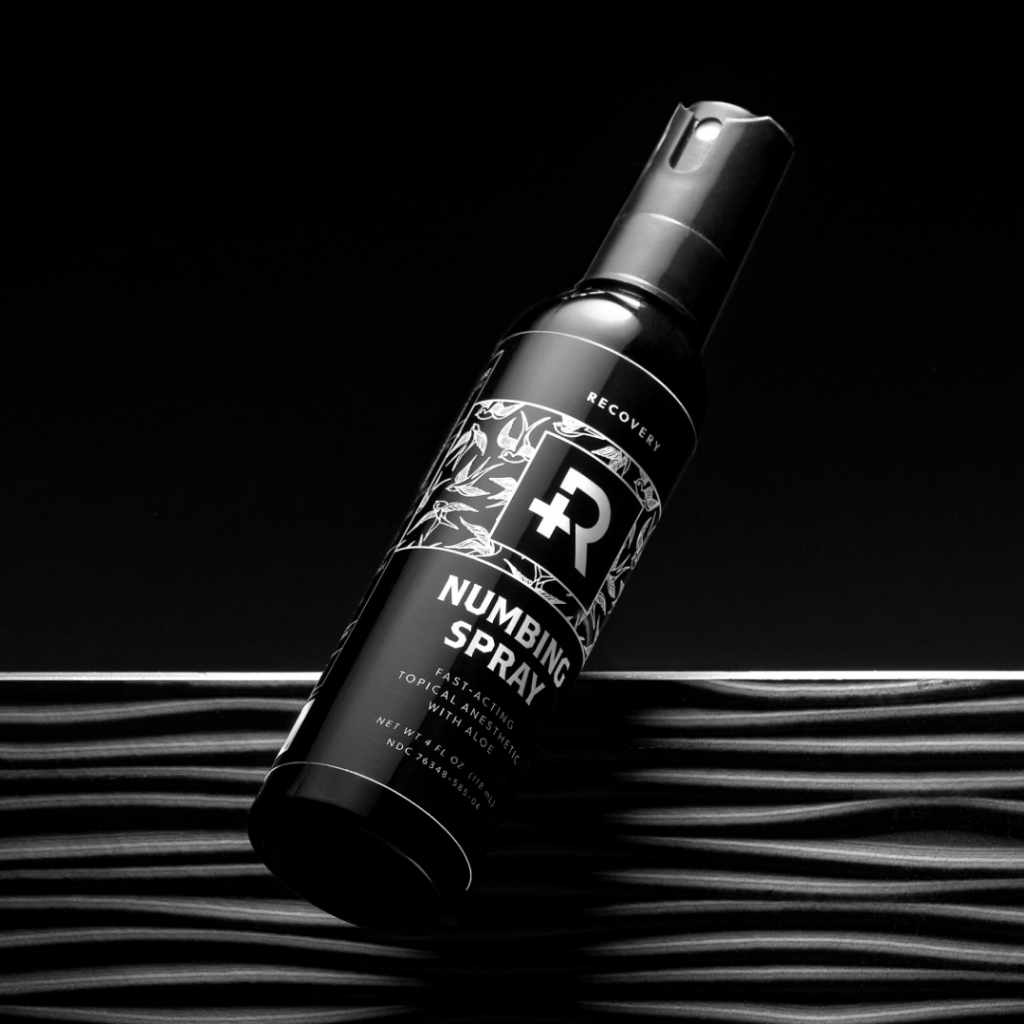
How It Works (And Why It Matters)
When applied to the skin, numbing spray delivers local anesthetics that temporarily block nerve signals from reaching the brain. Translation: less pain from the needle. Some formulas also come with bonus ingredients that help reduce swelling, bleeding, and even the risk of infection, thanks to the main and secondary ingredients working together. So, what’s inside this magic mist that takes (some of) that pain away?
Here’s a breakdown of common ingredients you’ll see:
The Essentials:
- Lidocaine: The heavy-hitter numbing agent often paired with other agents like Prilocaine to boost the numbing effects. Some numbing sprays are formulated with up to 4% lidocaine for extra numbing power.
- Epinephrine (in select formulas): A vasoconstrictor that helps minimize swelling and bleeding during the session. NOTE: Epinephrine can make the skin tougher to tattoo, so some artists prefer epinephrine-free formulas….. something to consider when you’re shopping around.
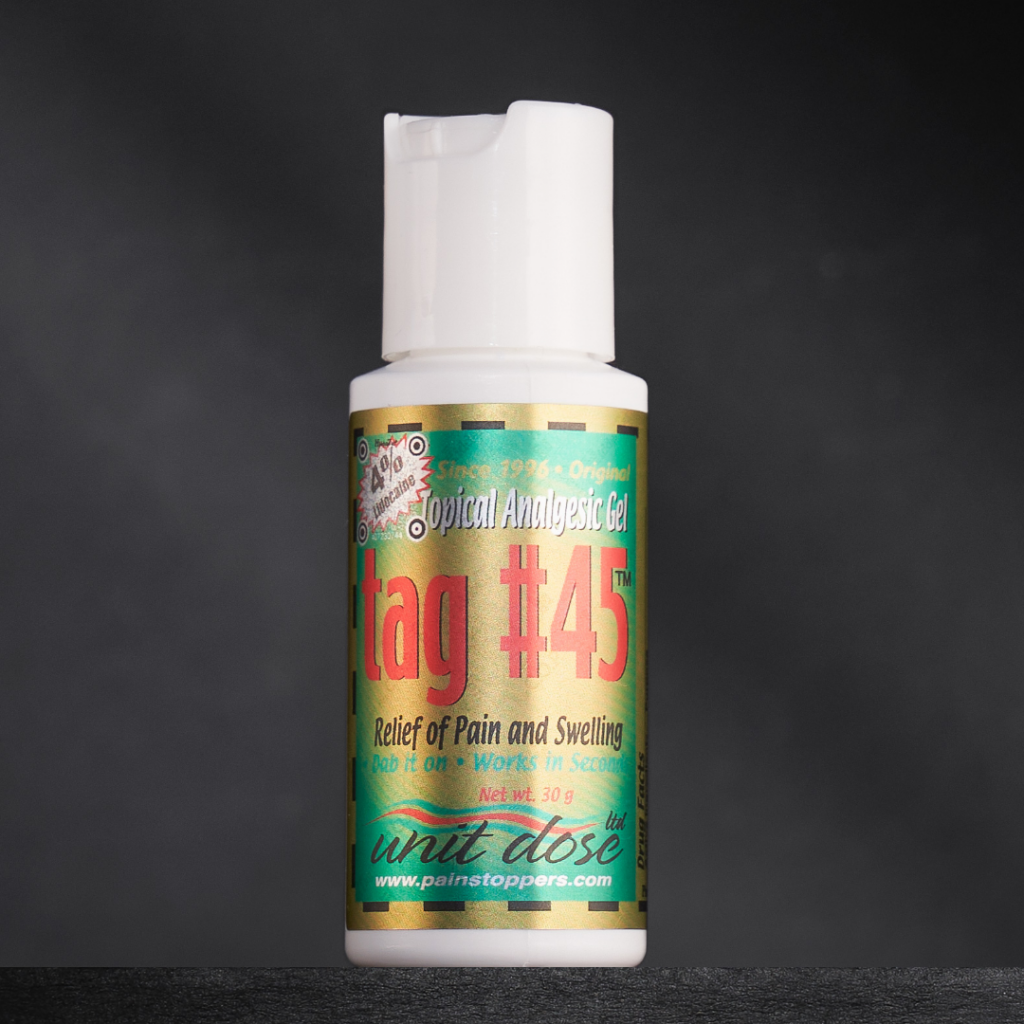
The Other Stuff (But Just As Important): Water, alcohol, and anti-inflammatory or skin-soothing agents (like aloe) round out the formula, helping skin stay calm under the needle.
⚠️ Pro tip: Some numbing solutions, like Recovery Numbing Spray, use aloe in lieu of epinephrine to reduce inflammation.
How Long Does It Last?
On average, one application keeps things numb for about 1–2 hours. But it can vary—some people metabolize it faster than others. For longer sessions, reapplication might be necessary to keep things comfortable.
Spray vs. Cream: What’s Better for Your Workflow?
Both numbing sprays and creams get the job done, but they shine in different ways:
- Spray: Quick, easy, and ideal for shorter sessions or smaller pieces.
- Cream: Great for pre-numbing larger areas but typically requires 30–60 minutes of prep and can get messy.
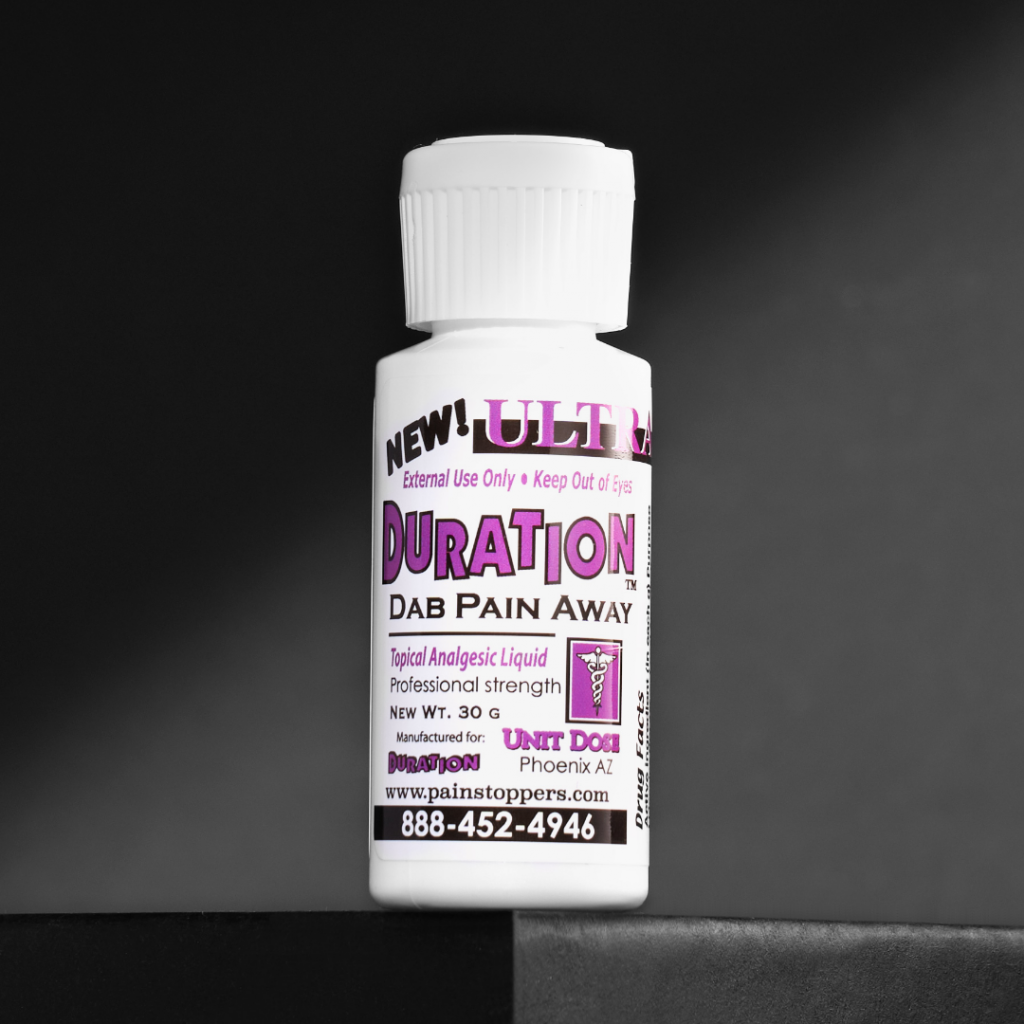
Whether you go for the numbing spray or cream really comes down to factors like the length of the session, where the tattoo is going, and how sensitive your client is to pain.
Can It Affect the Tattoo?
It can, and that’s something to consider before you spray away. While it helps with pain, some ingredients might mess with how the skin responds to ink—or how it heals.
Potential Downsides:
- Slower healing: (We touched on this above), but epinephrine slows down inflammation and blood flow, which is the body’s immune system at work, healing broken skin.
- Allergic reactions: Some clients might experience redness and irritation on top of pain from the tattoo itself.
- “Spongy” skin texture: Makes ink application and saturation tricky. This could cause your client’s tattoo to look a lil’ wonky after it’s healed.
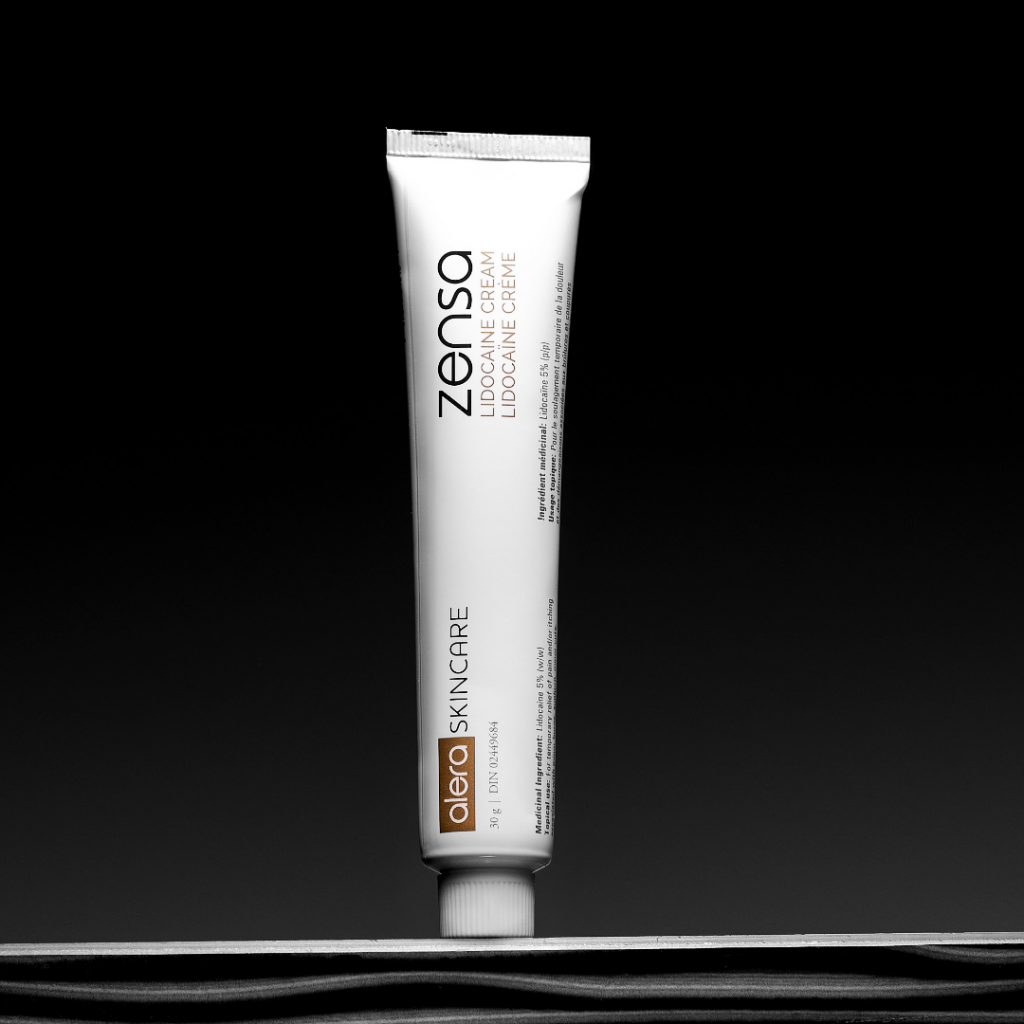
On the Plus Side, numbing spray provides:
- Antibacterial boost: Thanks to ingredients like alcohol.
- Less stress: Your client can sit stiller for longer.
- Better aftercare management: A client is more likely to follow aftercare instructions properly if they aren’t writhing in agony after a session.
Bottom line: it’s best to weigh the pros and cons before making them a routine part of your sessions.
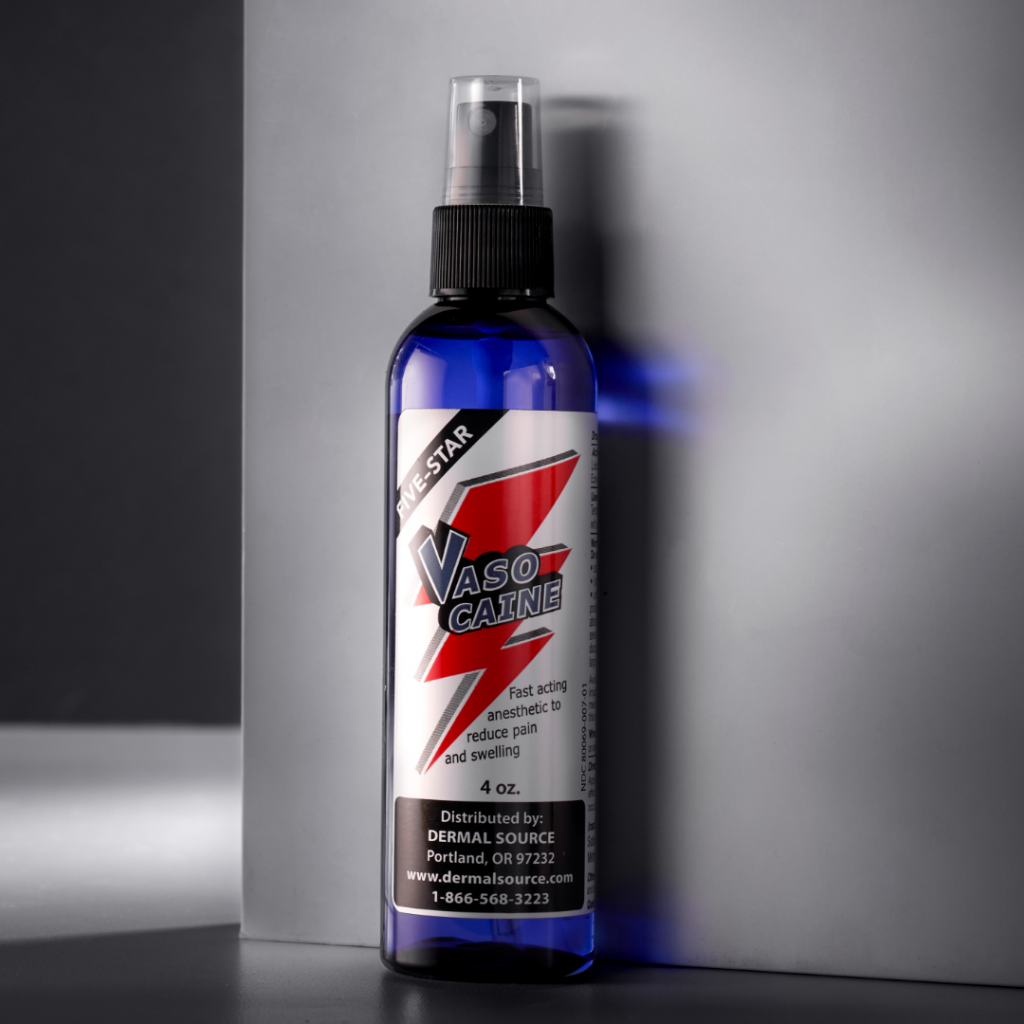
Artist-Approved Numbing Sprays Worth Checking Out:
Check out a few trusted options in the industry:
- Recovery Numbing Spray
- Five-Star Vasocaine
- INK-EEZE Gold Label Numbing Spray
- Hustle Butter Numbing Spray
- 3M™ Cavilon™ No Sting Barrier Film
A Comfortable Client = A Happy Client
Let’s be real—at the end of the day, comfort is key. A client who has a comfortable experience is likelier to come back. Moreover, a client who needs fewer breaks throughout the tattoo session means your work gets done faster.
Numbing spray may not always be necessary, but when used thoughtfully, it makes a huge difference. Just be sure you understand what you’re using, how it works, and any possible side effects. Because good tattoos aren’t just about the art—they’re about the experience, too.
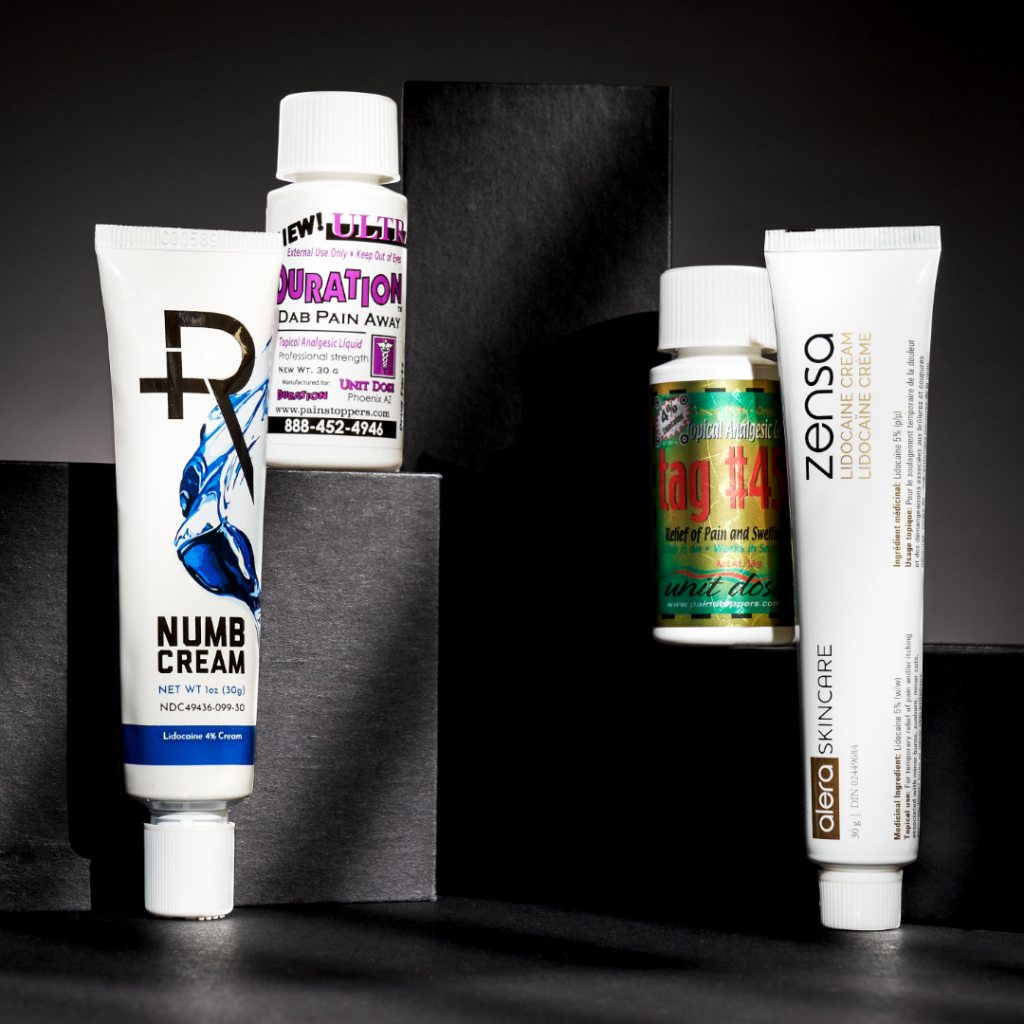


Comments are closed here.